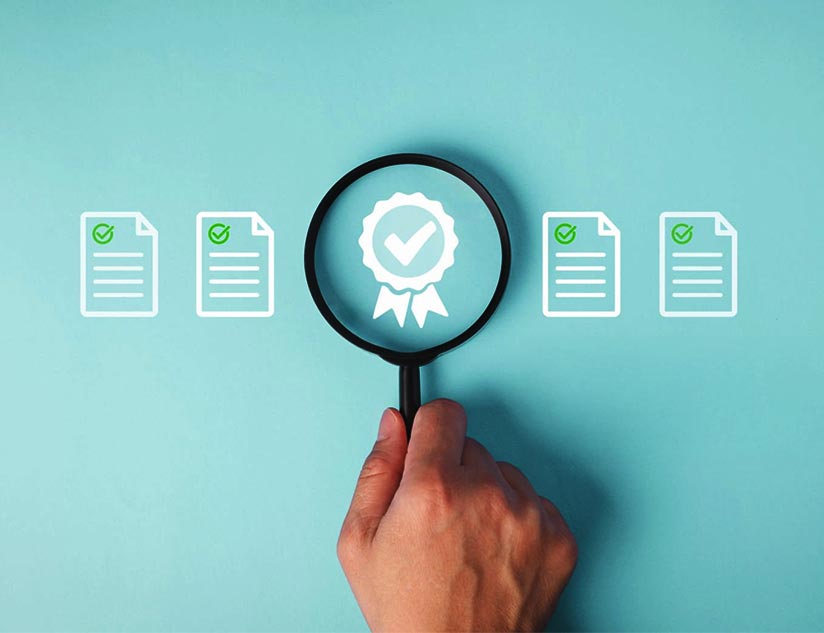
Are You Losing District Deals Because of Education Compliance Gaps?
SETDA’s 2025 EdTech Quality Indicators Guide lists “Safe,” or student data privacy and security, as the very first pillar for district edTech adoption. And it defines the direction for everything that follows: accessibility, interoperability, usability, and instructional design. In the K-12 space, education compliance is no longer a checklist. Procurement teams can disqualify your educational content without even reviewing it, even if it is of top-notch quality, in case it does not meet compliance requirements.
Do you know who’s the silent deal-breaker? It’s non-compliance.
In the wake of large-scale incidents, such as the PowerSchool data breach, districts are no longer willing to take chances with student privacy. “This is a tidal wave coming for the ed-tech vendor community,” says Doug Levin, co-founder and national director of the K12 Security Information eXchange. K-12 education publishers need to know compliance like the back of their hands and embed it in the content and distribution DNA.
Read more https://www.getmagicbox.com/blog/is-your-digital-learning-platform-ready-for-the-compliance-test/
The Compliance Landscape for K-12 Publishers
The compliance landscape for K-12 publishers is expanding and getting tighter at the same time. While education compliance guidelines for publishers are increasing, scrutiny is intensifying. SETDA’s quality indicators prioritize data privacy, cybersecurity, and responsible use of technology, which is essential in the age of AI.
Here’s a round-up of guidelines you must follow:
Data Privacy Laws
These include FERPA, COPPA, and state-level protections, such as SOPIPA.
Accessibility Regulations
Following WCAG 2.1 AA to ensure inclusive learning for all students is non-negotiable.
Interoperability Standards
1EdTech’s LTI, OneRoster, and CASE framework for seamless LMS/SIS integrations.
Security and Transparency Mandates
Clear documentation on third-party data processors, SSO, encryption, and role-based access controls.
Districts are tightening education compliance requirements for K–12 publishers. They expect you to apply with more than great content and a distribution strategy. They demand demonstrable compliance, ecosystem alignment, and accountability from day one.
Common Compliance Gaps That Kill Deals
You may mistakenly assume that following compliance guidelines is enough. However, the reality is far from it. Here’s what you need to know:
- You need data privacy certifications. Unclear consent policies or misalignment with FERPA and COPPA can be a deterrent in getting those.
- Both your content and interfaces should meet accessibility guidelines. You missed keyboard navigation? There goes your WCAG 2.1 AA compliance.
- US states have several internal protection laws. Abide by them or say goodbye to adoption for the school year.
- Finally, updated and complete documentation. Stale privacy statements or placeholder security policies without evidence are no longer acceptable.
The Ripple Effect: What Non-Compliance Costs You
Eye opener: It’s more than the adoption opportunity this year.
Non-compliance can silently damage your credibility with procurement officers. Lost reputation crushes your chances of adoption in the future. You also run the risk of legal penalties and operational disruptions. In the long term, this translates into slow growth and competitive disadvantage.
Proactive Strategies to Close the Gaps
The good news is that these gaps can be bridged with a little effort. Education compliance needs to come to the forefront for K-12 publishers. Here’s what you need:
Conduct Regular Compliance Audits
Use internal or third-party tools for a full education platform compliance audit. This can span privacy, accessibility, and integrations. While internal education content readiness assessment is necessary, third-party education platform compliance audits add credibility.
Embed Compliance in Publishing Workflows
Stop treating compliance like a dessert. It’s the entry ticket to the district dining room. No compliance means no seat at the table. Better yet, consider it your protein, as district procurement teams are hungry for it. Make it your selling point. Build compliance into your content development and distribution pipelines. Ensure that accessibility compliance in educational platforms is checked at every sprint, not just at release.
Align with District Checklists
Monitor how leading districts structure their RFPs and procurement rubrics. Many are already following SETDA or CoSN-aligned digital learning compliance standards. Keep an eye out for subtle differences in each state’s RFPs. These can be silent deal-breakers, too.
Leverage Tools for K–12 Education Compliance for Publishers
Partner with technology providers that offer compliance-by-default, especially for rostering, SSO, and data handling. These tools allow K-12 publishers to imbibe compliance at the core, embedding it across education publishing workflows. For instance, MagicBox’s, MagicSync is an all-in-one integration and education management solution for K-12 publishers.
Maintain Updated Documentation
This is very important. Much like great food needs to be served well. Your privacy policy, TOS, and accessibility statements should be current, transparent, comprehensible, and easy to access, especially for district IT teams, leading them to make decisions in your favor.
Making Compliance Your Competitive Edge
K-12 education compliance isn’t just an additional point for a publisher’s RFP response. It is something to lead with. As districts now look for education content compliance as a marker of quality and trust, making it your selling point can be a growth accelerator. Don’t let an incomplete privacy page or an empty tag disqualify your next district pitch. Treating compliance as a strategy can differentiate you from the competition. Experts at MagicBox can help you turn compliance mandates into growth levers.
Source link




